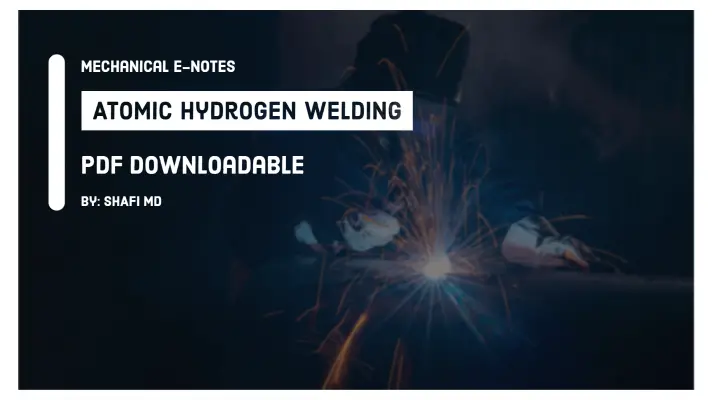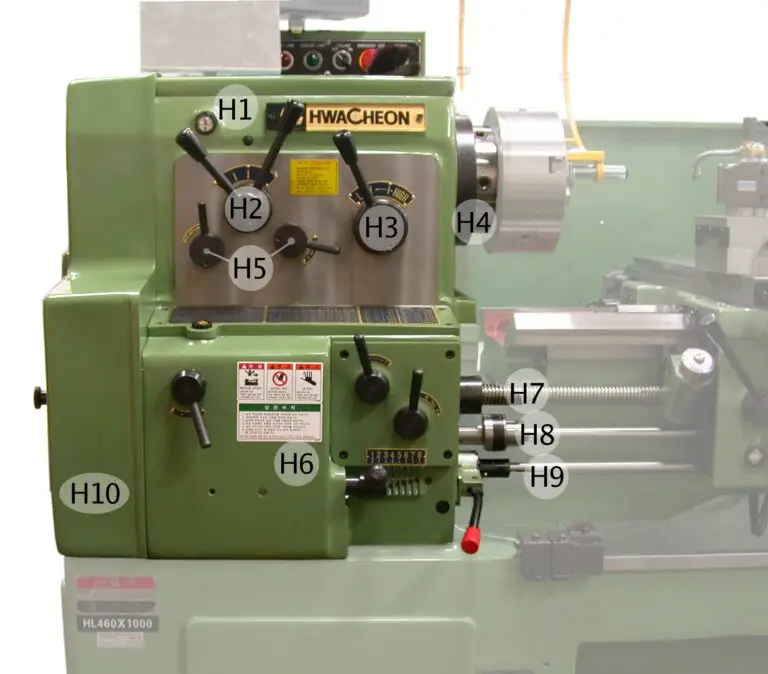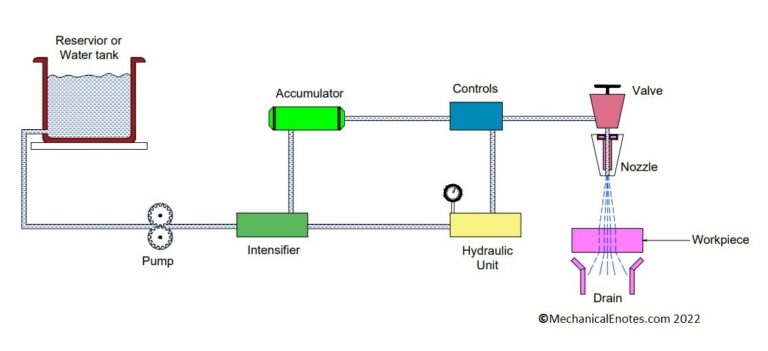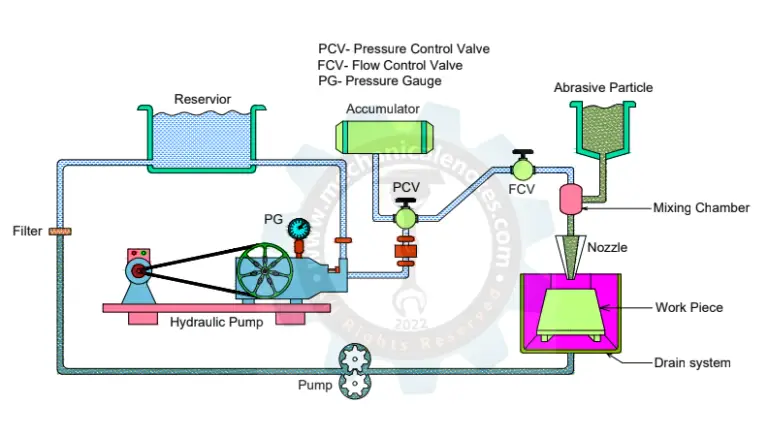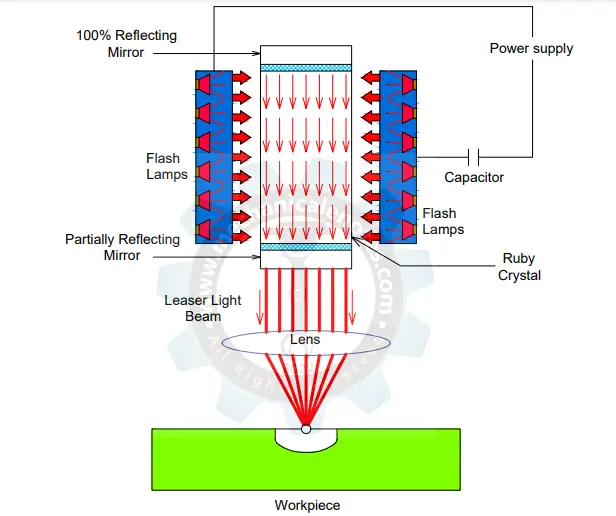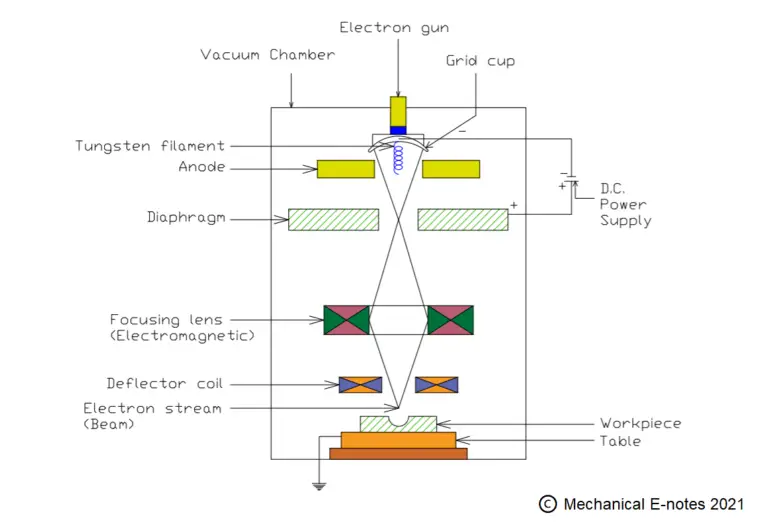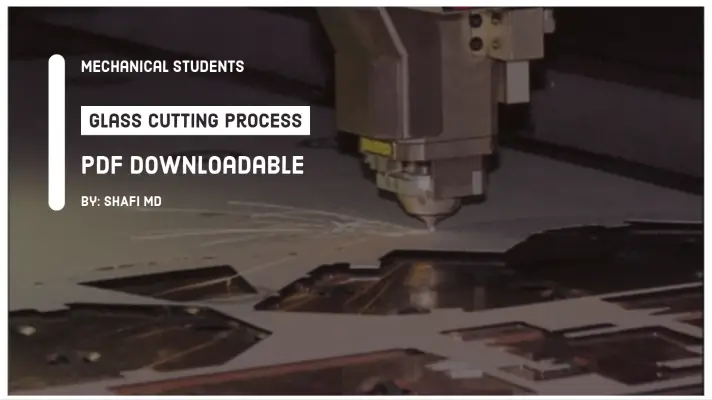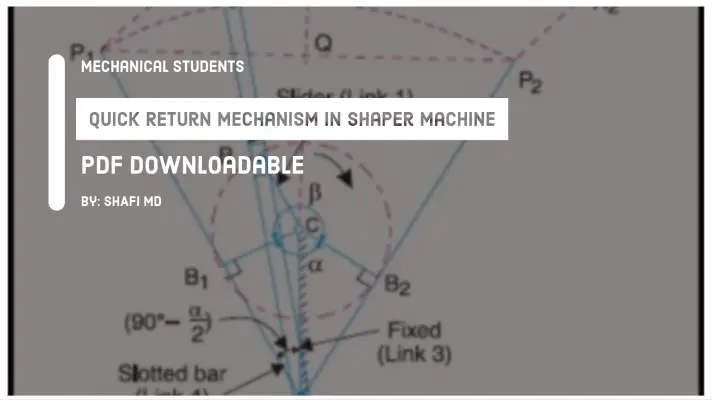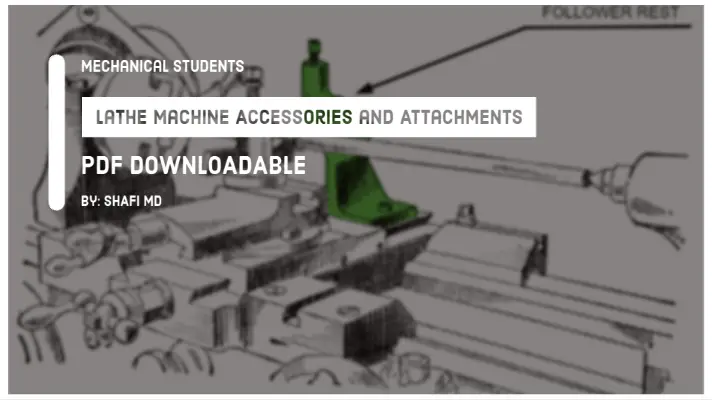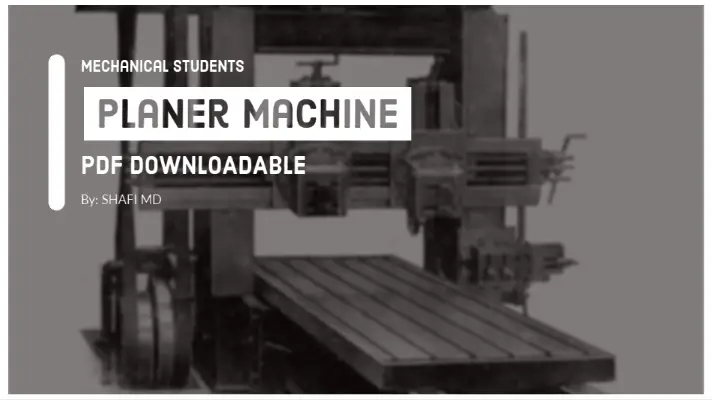Machining Process: Definition, Types, Advantages, Disadvantages & Applications [PDF]
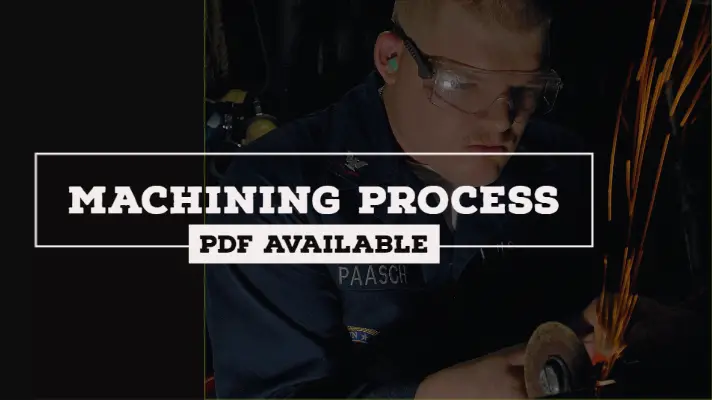
Hello learners, today in this paper we are going to discuss What is Machining Process? and also see the types, advantages, disadvantages and applications of the Machining Process.
Before going down to the machining process, we need to know about some terms, and they are as follows.
Machine Tool Definition:
A machine tool is a power-driven device used for sizing, shaping, and processing of a product to the desired accuracy by removing the excess material in the form of chips.
For example, Lathe Machine, Drilling Machine, Shaping Machine, Planar Machine etc.
Cutting Tool Definition:
A cutting tool is used to remove the material from the surface of the workpiece. It must be harder than the workpiece to carry out the operation.
There are two types of cutting tools.
- Single-Point Cutting Tool and
- Multi-Point Cutting Tool.
Single-Point Cutting Tool:
- A single-point cutting tool has only one edge for cutting.
- This single-point cutting tool is used as a cutting tool in turning operation.
- Other Examples include the tools used in lathe, Planing, Shaping etc.
Multi-Point Cutting Tool:
- A Multi-point cutting tool has more than one edges for cutting Operation.
- This multi-point cutting tool is used as a cutting tool in the drilling operation, milling operation etc.
- Ex: Milling cutter, Grinding wheel, Drill bit etc.
Chips in Machining Operations:
The unwanted material removed from the surface of the workpiece due to the application of load upon the cutting tool called as Chips.
There are two types of chips.
- Discontinuous chips
- Continuous chips
Discontinuous chips:
The Discontinuous chips are simply thrown away from the work zone during machining.
Continuous chips:
The Continuous chips may get adhered or welded onto the rake face of the tool due to the high temperature called as Built Up Edge formation(BUE).
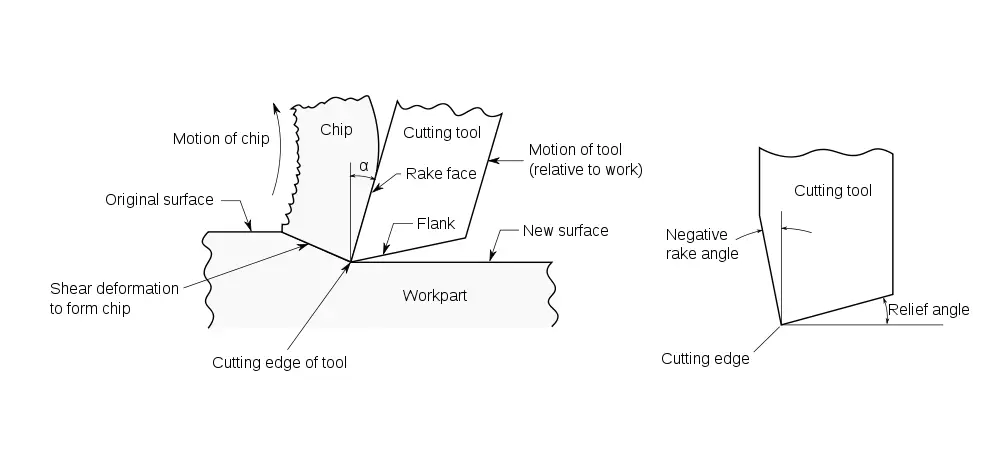
Now let's dive into our main topic that is Machining Process.
Machining Process Definition:
It is a process in which a piece of raw material is cut into a desired shape and size using sharp cutting tools called a Machining Process.
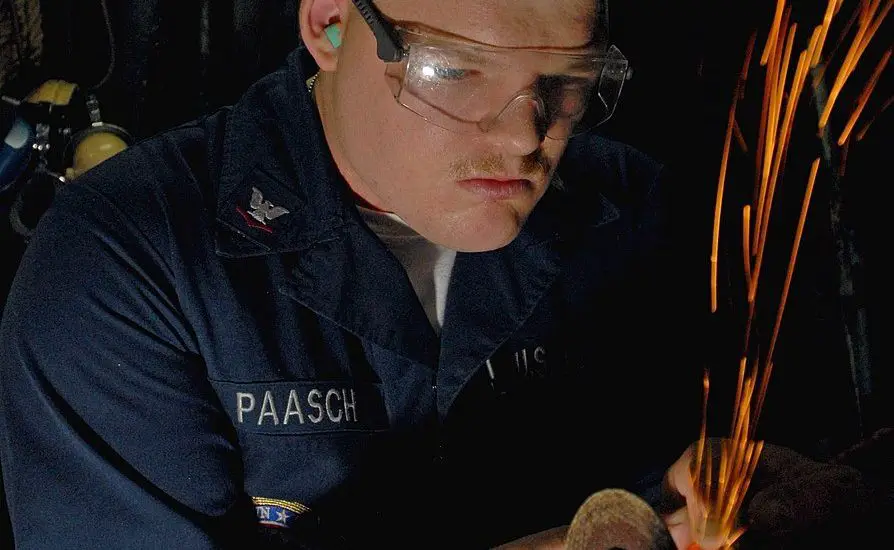
Types of Machining Operations:
There are two types of the machining process.
1. Conventional Machining Process
The Conventional machining processes are as follows.
Drilling Operation:
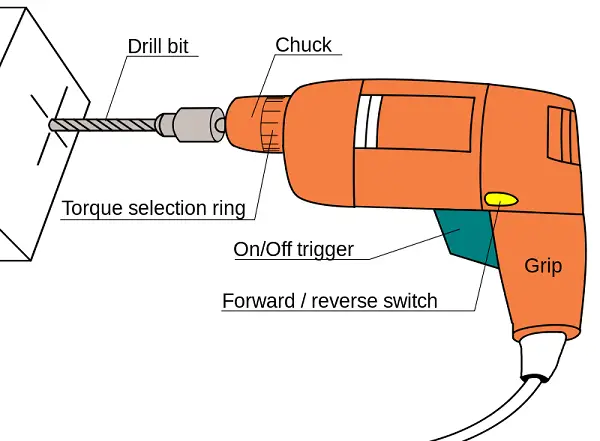
It uses a multi-point cutting tool also known as a Drill bit, to remove the material from the surface of the workpiece in the form of holes.
The MRR (Material Removal Rate) is very high in the case of the Drilling operation, compared to the working on the single-point cutting tool.
The parts of a Drilling machine are Table Clamp, Vertical Column, Base, Swivel Table, Power Transmission system (Stepped Cone Pulley), Drill Feed Handle (Hand Wheel), Spindle, Chuck, and Drillbit.
Read: Drilling Machine
Boring Operation:
It is an advancement of Drilling operation i.e. Enlarging an existing hole is called boring operation.
Milling Operation:
Milling is an operation that uses rotory cutters such that it can advances into the work material.
To make grooves on the work material, milling operation can be performed.
Turning Operation:

It is an operation performed on the lathe machine which is used to remove the material from the surface of the workpiece such that the diameter of the component reduces to the desired value called Turning operation.
2. Unconventional Machining Process:
An advanced to Conventional Machining processes.
USM (Ultrasonic Machining):
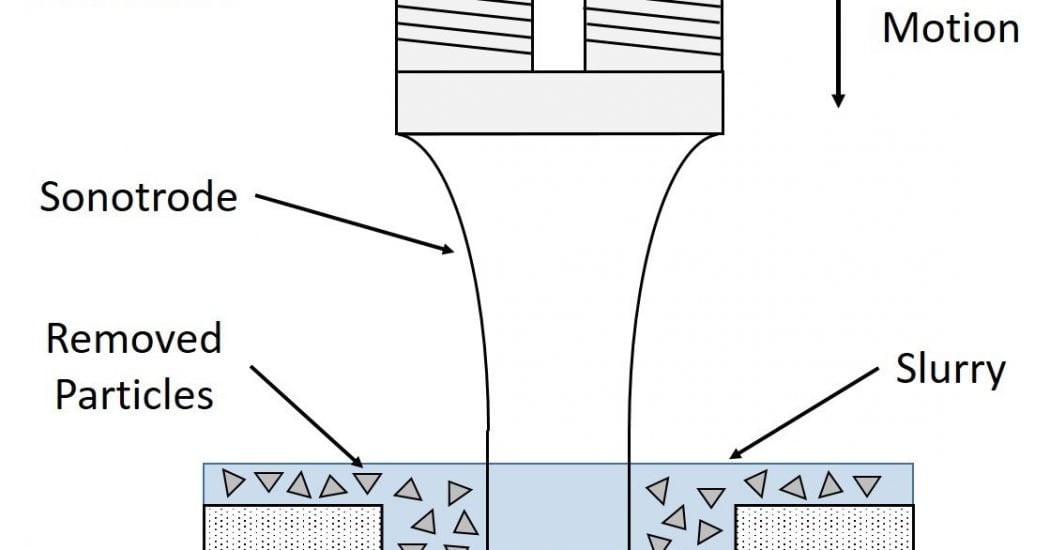
It is one of the types of unconventional Machining methods that can produce Circular and non-Circular holes of a very small size which is <1mm size.
This tool will induce impact loads on to the abrasive particles which in turn induces impact loads on to the workpiece and thereby the machining can be done.
Electrical Discharge Machining Process:
It is also known as Spark Machining process.
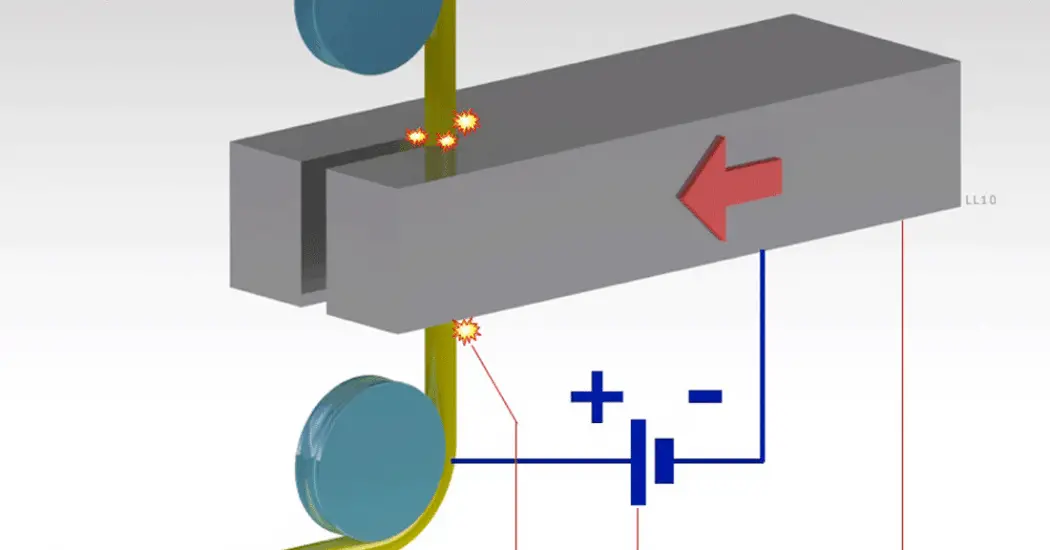
In this process, electrical energy is used to generate the Spark between the tool and workpiece submerged under the dielectric medium so that material removal takes place from the surface of the workpiece by the local melting or the vaporization.
Let's dive into Advantages, disadvantages and Applications of Machining Process...
Advantages of Machining Process:
The advantages of machining process are as follows.
- A high surface finish can be obtained.
- Machining is not only performed on the metal but it also performs on wood, plastic, composites, and ceramics.
- A variety of geometry features are possible, such a Screw threads, Very straight edges, Accurate round holes, etc.
- Good dimensional accuracy.
Limitations of Machining Process:
The limitations of machining process are as follows.
- The accuracy of the components produce is dependent on the efficiency of the operator.
- Consistency in manufacturing is not present. Hence 100% inspection of the component is required.
- The personal needs of the operator are reducing the production rates.
- Because of the large amount of Manpower involved, the labor problem will also be high.
- The complex shapes like parabolic Curvature components, Cubicle Curvature components are difficult to manufacture.
- Frequent design changes in the component cannot be incorporated into the existing layout.
Applications of Machining Process:
The applications of machining process are as follows.
- The machining can be performed on various components in the form of either conventional or unconventional processes.
- The machining can be performed on a lathe machine, milling machine, ultrasonic machining, etc.
- The advancement of machining can be performed on CNC Machines where there is no intervention of humans.
This is the complete explanation on Machining Process. I hope you liked this lesson, if you have any doubts feel free to comment down below.


